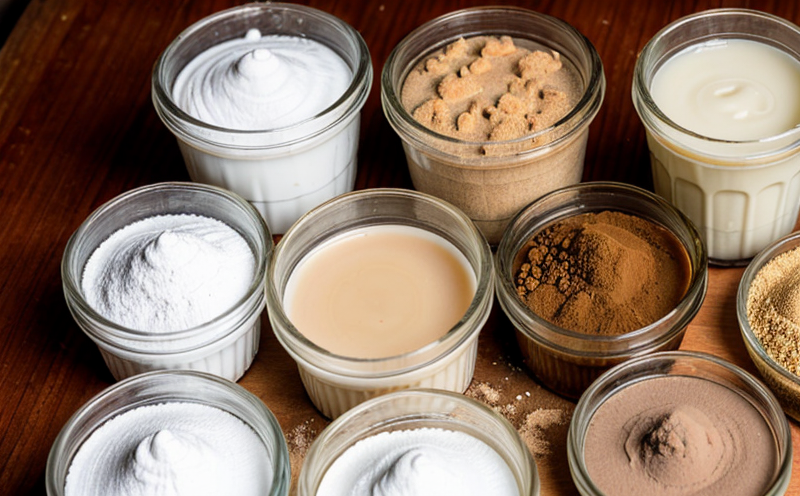ISO 18413 Detection of Yeast and Mold Contamination in Drinking Water for Food Use
The International Organization for Standardization (ISO) has established ISO 18413, a standard designed to help laboratories detect yeast and mold contamination in drinking water intended for food use. This method is crucial because contaminants like yeasts and molds can compromise the safety, quality, and shelf life of food products derived from such water.
The presence of these microorganisms not only affects the taste and appearance but also poses potential health risks to consumers. Yeast and mold can produce toxins known as mycotoxins, which have been linked to various adverse effects on human health including gastrointestinal issues, immunosuppression, and in extreme cases, chronic diseases.
ISO 18413 provides a comprehensive framework for testing drinking water intended for food use. The test ensures that the water meets stringent hygiene standards, thereby protecting public health. This service is particularly important in sectors such as beverage manufacturing, dairy processing, and bakery industries where water quality directly influences product safety.
The methodology involves several steps including sample preparation, culture growth on selective media, microscopic examination, and confirmatory tests using molecular techniques if necessary. It ensures accurate detection of both yeast and mold species that are capable of surviving in drinking water environments.
Understanding the significance of this test helps stakeholders across industries to comply with regulatory requirements set by organizations like FDA (US Food and Drug Administration), EFSA (European Food Safety Authority), and other national authorities.
Why It Matters
The importance of ensuring drinking water intended for food use is free from yeast and mold contamination cannot be overstated. Yeasts and molds are ubiquitous in nature; they thrive in various environments, including water sources used for human consumption. These microorganisms can easily contaminate drinking water through different pathways such as improper treatment processes or cross-contamination during distribution.
Once introduced into the food chain, yeasts and molds pose significant risks to public health:
- Health Risks: Some species of mold produce harmful toxins known as mycotoxins. Consuming contaminated products can lead to severe health issues ranging from mild allergic reactions to more serious conditions like cancer.
- Potential Spoilage: Yeasts and molds accelerate the spoilage process of food products, leading to increased waste and economic losses for manufacturers.
- Regulatory Compliance: Non-compliance with international standards such as ISO 18413 can result in hefty fines, product recalls, and reputational damage.
In summary, implementing the ISO 18413 standard is essential for maintaining food safety, enhancing consumer confidence, and ensuring adherence to global regulatory frameworks.
Scope and Methodology
| Step | Description |
|---|---|
| Sampling | Collect representative samples from the drinking water source, ensuring they are not contaminated during sampling. |
| Culture Growth | Inoculate selective media suitable for growth of yeasts and molds. Incubate under optimal conditions to facilitate fungal proliferation. |
| Microscopic Examination | Examine colonies formed on the agar plates using a microscope to identify morphological characteristics of yeasts and molds. |
| Identification | Confirm identification using standard taxonomic keys or molecular techniques like PCR (Polymerase Chain Reaction). |
| Acceptance Criteria | Description |
|---|---|
| No Growth Threshold | The absence of any visible colonies on the selective media indicates compliance with ISO 18413. |
| Limit Values | If growth is detected, it must not exceed specified limits outlined in the standard. These limits are set to ensure minimal risk of contamination leading to food spoilage or health hazards. |
Why Choose This Test?
Accurate Detection: ISO 18413 ensures accurate detection of yeast and mold species that may contaminate drinking water intended for food use.
Compliance Assurance: By adhering to this standard, laboratories can ensure compliance with international regulations, thereby avoiding legal issues and reputational damage.
Quality Control: Regular testing helps maintain high standards of water quality, which is critical for producing safe food products.
Risk Management: Early detection allows for quick corrective actions to be implemented, minimizing the risk of contamination spreading further.
Consumer Confidence: Ensuring water quality through rigorous testing builds trust among consumers regarding the safety and reliability of food products derived from this water source.
Economic Benefits: Preventing contamination-related issues reduces costs associated with product recalls, waste management, and potential lawsuits.





